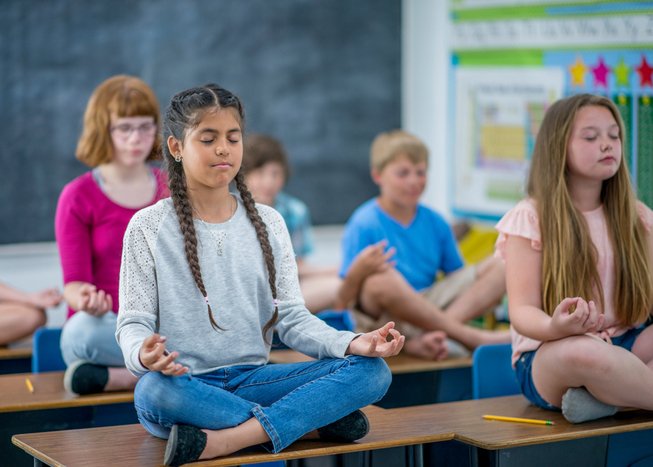
Mindfulness and Mental Health
“There is no health without mental health.” – World Health Organization
It’s another Monday at Davis Elementary School within Plano ISD. As students enter their classrooms, they tune into the day’s announcements broadcasted over the school intercom. The student announcer concludes by saying, “now it’s time for the Mindfulness Monday Moment with Mrs. Aldridge.” At this cue, students straighten up in their seats, place their feet flat on the ground, and either close their eyes or gaze downward. Mrs. Aldridge, a Special Education teacher, appears on the LCD projector screens in each classroom, inviting all students to join her as she demonstrates mindful breathing exercises.
“Take three deep breaths. Breathe in, breathe out. Breathe in, breathe out. Again… Breathe in, breathe out.”
Understanding Mindfulness
You might ask, “What is mindfulness?” Melissa Berg-Baker, a parent volunteer and mindfulness expert within Plano ISD, describes mindfulness as “noticing what’s happening in the body/mind in the present moment, without labeling it ‘good’ or ‘bad’ or wishing it were different.” Mindfulness calls for a purposeful focus on one’s breath along with deliberate physical movements, training the brain to concentrate non-judgmentally. It is a straightforward yet highly effective method to enhance the overall well-being and health of both students and adults. According to the National Alliance on Mental Health, 1 in 5 young people faces anxiety or mood disorders during their educational years. Research indicates that slow, deep breathing can minimize stress hormones, lower blood pressure, decrease heart rate, and reduce anxiety while promoting relaxation, awareness, and mental clarity. This practice soothes the nervous system, empowering individuals to make calm, informed decisions. Additional benefits include:
– Increased self-awareness and self-esteem
– Reduced stress and feelings of depression
– Enhanced attention span
– Improved performance on tests and exams
Benefits of Mindful Breathing
Mindful breathing serves as a tool for managing complex feelings and helping students navigate the everyday pressures of life. Recognizing thoughts and automatic reactions is a vital step toward modifying those behaviors. Mindfulness provides a moment to pause between an emotion and a reaction, offering the chance to modify behavior instead of responding negatively to stress. When children experience anxiety, it is a resource they can utilize from their social-emotional learning toolkit to gain control over their situations and reduce impulsivity. This demonstrated skill fosters a positive impact on the school’s environment.
Implementation in Schools
This growing approach to mindfulness is being embraced in many schools across Plano ISD to forge safer, more peaceful learning settings where children can thrive. Cultivating the ability to be present with one’s emotions and thoughts may prove to be a pivotal factor for success within the classroom. For further details on Social Emotional Learning in Plano ISD, please visit www.pisd.edu/sel.






